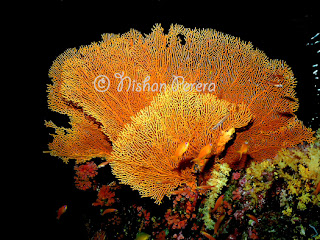The Similan Islands are a group of nine granite islands in the Andaman Sea, about one hundred kilometers northwest of Phuket, Thailand. The name is derived from the Malay word Sembilan, meaning nine. These islands and surrounding marine waters comprise the Similan Islands Marine National Park, one of the most popular diving destinations in SE Asia. The reefs around the islands are famous for colorful coral gardens and a high diversity of reef fish. It is also a popular destination to see large pelagics such as manta rays and whale sharks that are attracted by nutrient rich upwellings. The western sides of the islands are exposed to seasonal rough seas and have dramatic wave eroded boulders, ledges and drop offs, while the more sheltered eastern sides have gently sloping coral gardens.
Like many reefs in the Indian Ocean the Similan Islands suffered extensive coral bleaching in 2010 resulting in the death of many hard and soft corals. While it is possible that they will recover with time their long-term future is seriously threatened by global climate change. In order to reduce human impacts the Thai government has close off some areas from tourism in order to allow the reefs to regenerate. Seasonal closures have proven to be highly effective in allowing habitats and animal populations to recover from mass mortality events or chronic stress caused by both anthropogenic causes and natural events. We wonder if Sri Lanka could ever follow such policies, both in our marine and terrestrial protected areas.


No comments:
Post a Comment